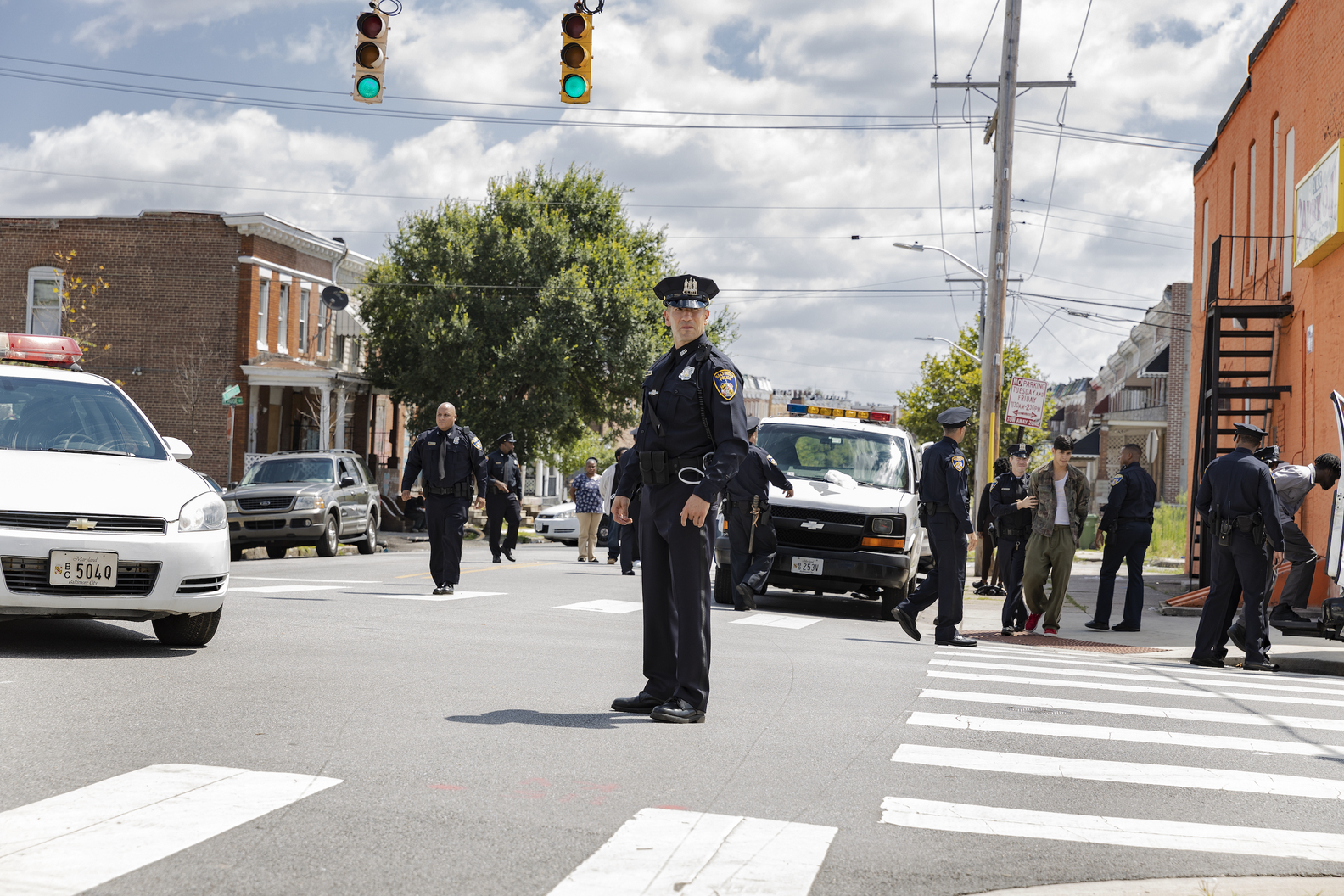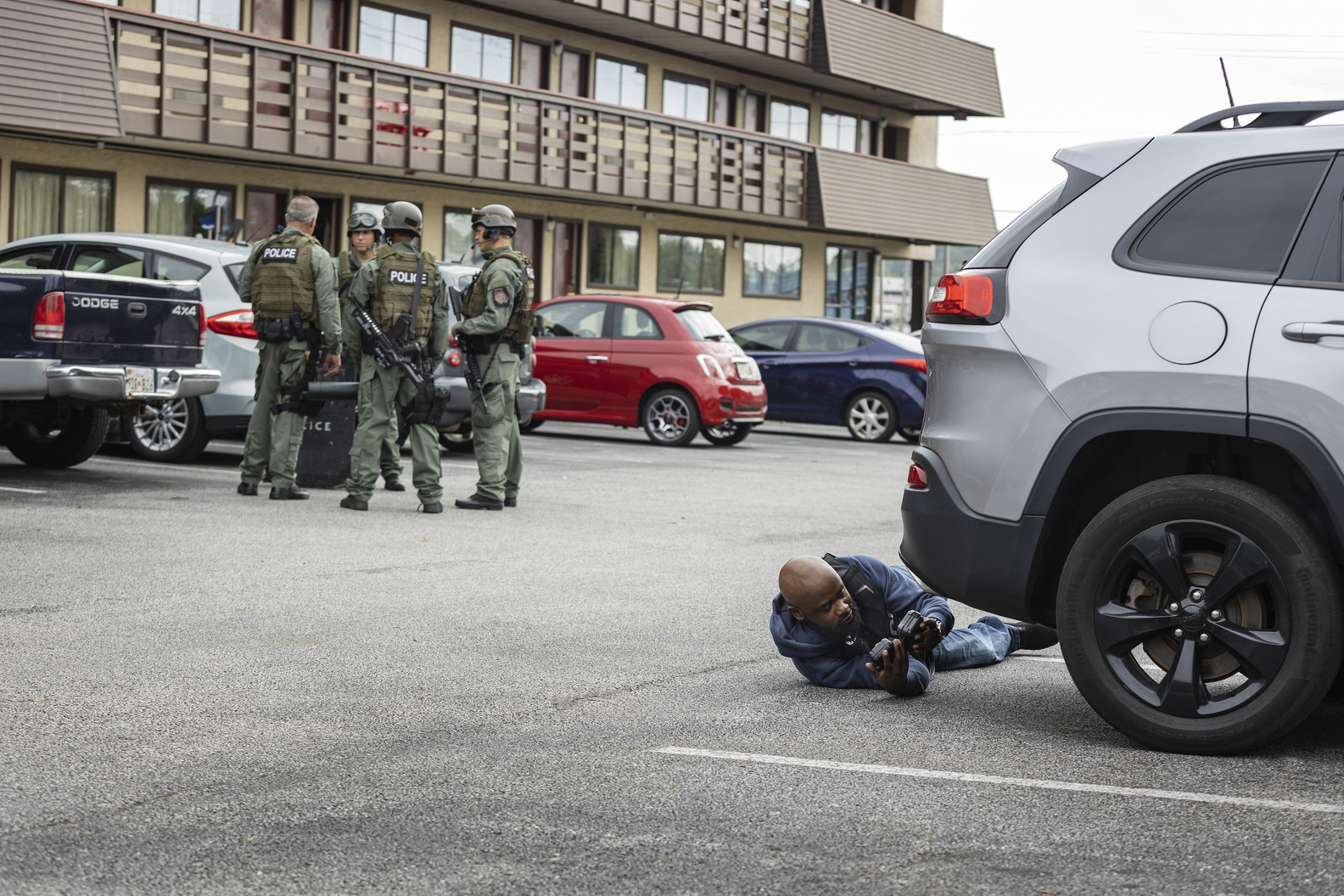We Own This City, an HBO Max miniseries out April 25, about a Baltimore Police Department (BPD) task force unit that went rogue, highlights some of the biggest concerns with modern policing in America. Adapted from former Baltimore Sun reporter Justin Fenton’s 2021 book We Own This City: A True Story of Crime, Cops, and Corruption, the show chronicles the rise and fall of one of the most shocking instances of police corruption in Baltimore’s history.
The miniseries, co-created by The Wire‘s David Simon and George Pelecanos, follows a special unit, known as the Gun Trace Task Force (GTTF), which was assembled in 2007 to remove guns and violent criminals from the streets of Baltimore. Instead of getting rid of crime, police officers in the GTTF engaged in it, against the communities they were supposed to serve. In 2015, the Drug Enforcement Administration (DEA) started investigating the unit. They specifically tracked one member, Momodu Gondo, who was believed to be working with drug dealers and possibly helping them circumvent drug charges.
The extent of the GTTF’s reign of terror on the city of Baltimore became more widely known in 2017, when eight members of the unit were indicted on charges of extortion, robbery, racketeering, and overtime fraud. The case was brought after the DEA heard Gondo admitting to selling drugs on tape. Once Gondo was arrested and authorities began investigating the entire unit, the GTTF’s scale of corruption became apparent.
We Own This City depicts the officers stealing drugs and money, authorities investigating their actions, and their eventual downfall and when the officers started to turn on each other. Here’s what to know about the true story behind the miniseries.
How the GTTF terrorized the city of Baltimore
The wide array of crimes the GTTF’s officers engaged in is staggering. They targeted suspected drug dealers, carried fake weapons in case they shot an unarmed person to plant the weapon on them, and would re-sell the weapons and drugs that they stole to criminals.
In one instance, revealed in court, officers took someone’s house keys, found out where that person lived and stole $100,000 from a safe in the house. In a 2016 incident, officers stopped and arrested a couple who had been leaving a Home Depot, even though there was no evidence that the couple committed a crime. When they found out that the couple had $40,000 in a house outside the city, they went to the house and took $20,000.
Amid protests following the killing of Freddie Gray in 2015, one GTTF officer allegedly prevented looting that was happening at a pharmacy. However, after clearing the scene, the officer stole drugs from the pharmacy, gave them to a drug dealer, and split the profits from the dealer’s sale of them.
Some GTTF officers admitted in court that they would drive fast toward groups of people in the street and slam on the breaks. They would see who ran out of the group, chase them, and detain them. This could happen anywhere from 10 to 20 times a night or, in some cases, 50 times a night. During their testimony, officers also admitted to putting illegal tracking devices on the cars of suspected drug dealers so they could rob their homes and sell any guns or drugs they found.
In total, the GTTF is believed to have stolen at least $300,000, 43 pounds of marijuana, 800 grams of heroin, three kilos of cocaine, and hundreds of thousands of dollars worth of jewelry.

Baltimore’s history of police corruption
The scandal broke at a time of struggle and high tensions between Baltimore community members and the police department. A 2016 Department of Justice (DOJ) investigation into the BPD found that significant levels of abuse and corruption within the department had gone on for years. The report also revealed “racial disparities” in who was impacted by the corruption and abuse.
“BPD’s targeted policing of certain Baltimore neighborhoods with minimal oversight or accountability disproportionately harms African-American residents,” the report says. “Racially disparate impact is present at every stage of BPD’s enforcement actions, from the initial decision to stop individuals on Baltimore streets to searches, arrests, and uses of force.”
The DOJ report came shortly after Gray’s killing sparked an uprising in the city and throughout the U.S. decrying police brutality and racial discrimination. And when the GTTF’s actions were publicized a year later, trust between the BPD and the communities they policed was already severely fractured.
In January 2022, a law firm’s independent investigation into the GTTF found institutional failure in supervision of the officers. “These guys had engaged in so much misconduct previously. Some was known by the police department and the department was incapable of taking care of its own business,” said Michael Bromwich, who led the independent investigation.
The report had a number of recommendations for the BPD, most of them focusing on more oversight and accountability for officers in the department.
“The aftershocks of the GTTF scandal continue to be felt to this day. Officers not directly associated with the GTTF have been charged and convicted in connection with events that occurred more than a decade ago,” the report says. “It took decades for the cancer of corruption revealed in the GTTF scandal to spread as widely as it did and to sink its roots so deeply into BPD; it will take years for BPD to demonstrate, in both words and deeds, that it has zero tolerance for corruption and misconduct.”

Read more: America’s Policing System Is Broken. It’s Time to Radically Rethink Public Safety
We Own This City shows what happened with the GTTF
As depicted in the series, six of eight GTTF members—Thomas Allers, Wayne Jenkins, Momodu Gondo, Evodio Hendrix, Jemell Rayam, and Maurice Ward—pleaded guilty to a number of charges and were convicted. The two others — Daniel Hersl and Marcus Taylor—pleaded not guilty and were convicted in 2018.
Gondo, Ward, Hendrix. and Rayam all agreed to cooperate with the (DOJ) and testified against Hersl and Taylor. Sergeant Wayne Jenkins, who was the leader of the unit, pleaded guilty to multiple charges including racketeering, robbery, and falsification of records and was sentenced to 25 years in prison, the stiffest of all the sentences. Hersl and Taylor both received 18-year sentences. The remaining officers involved received sentences ranging from seven years to 12 years. This includes a Philadelphia police officer, Eric Snell, who had previously been a part of the BPD and had ties to the GTTF.
In February 2022, Hendrix and Ward were released from federal prison after being sentenced to seven years. It’s unclear why they were granted early release.
“This is not about aggressive policing, it is a criminal conspiracy,” Rod Rosenstein, the former US Attorney for Maryland said in 2017 when the officers were charged. “These are really simply robberies by people wearing police uniforms.”
More Must-Reads from TIME
- Caitlin Clark Is TIME's 2024 Athlete of the Year
- Where Trump 2.0 Will Differ From 1.0
- Is Intermittent Fasting Good or Bad for You?
- The 100 Must-Read Books of 2024
- Column: If Optimism Feels Ridiculous Now, Try Hope
- The Future of Climate Action Is Trade Policy
- FX’s Say Nothing Is the Must-Watch Political Thriller of 2024
- Merle Bombardieri Is Helping People Make the Baby Decision
Write to Josiah Bates at josiah.bates@time.com